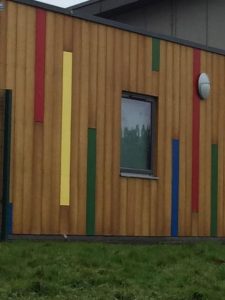Architects are already aware of the advantages of using aluminium in construction. Not just for external applications but for many internal and hidden elements of a building. But for external cladding applications, aluminium panels demonstrate many flexible properties. Aluminium continues to play a key part in the creation of visually striking buildings through advancements in cladding technology and very importantly, colour.
Aluminium meets design aspirations.
The environmental benefits of aluminium cladding and glazing materials cannot be disputed. As one example, studies showed that nearly 90% of all aluminium installed in the old Wembley stadium prior to its demolition was reclaimed or recycled.
This longevity is further enhanced when we consider that the powder coating process used today in the coating of aluminium panels and cladding can provide protection and is guaranteed for 15, 25 or even 40 years depending on the application.
Aluminium cladding panel lifespans can be infinite!
Older buildings constructed nearly 100 years ago that used aluminium demonstrate how this material can last a lifetime. You many not know that the top of the Empire State Building features one of the very first uses of anodised aluminium. This uppermost feature of this building still has the original aluminium cladding in place today.
For building exteriors, aluminium continues to dominate in the form of windows, curtain walling, ground floor treatments, commercial doors and screens. Aluminium is also used to create expansive glass roofs, atria, barrel vault roofs and much more. Whether these glazed products are fitted with glass or aluminium panels, it demonstrates again the versatility of the material.
Aluminium systems companies are now embracing what aluminium cladding can to do enhance an otherwise standard curtain walling system. Coloured panels feature heavily in modern developments and help bring a vibrancy to office buildings, hospital and schools. Of course, aluminium cladding will exceed the requirements of Document L of the Building Regulations and more recently is used in Passivhaus buildings and helps meet the requirements of standards for sustainable homes.
Aluminium therefore and cladding panels in particular are a true “cradle to grave” material that offers cost savings to building owners, flexibility and a long life.
